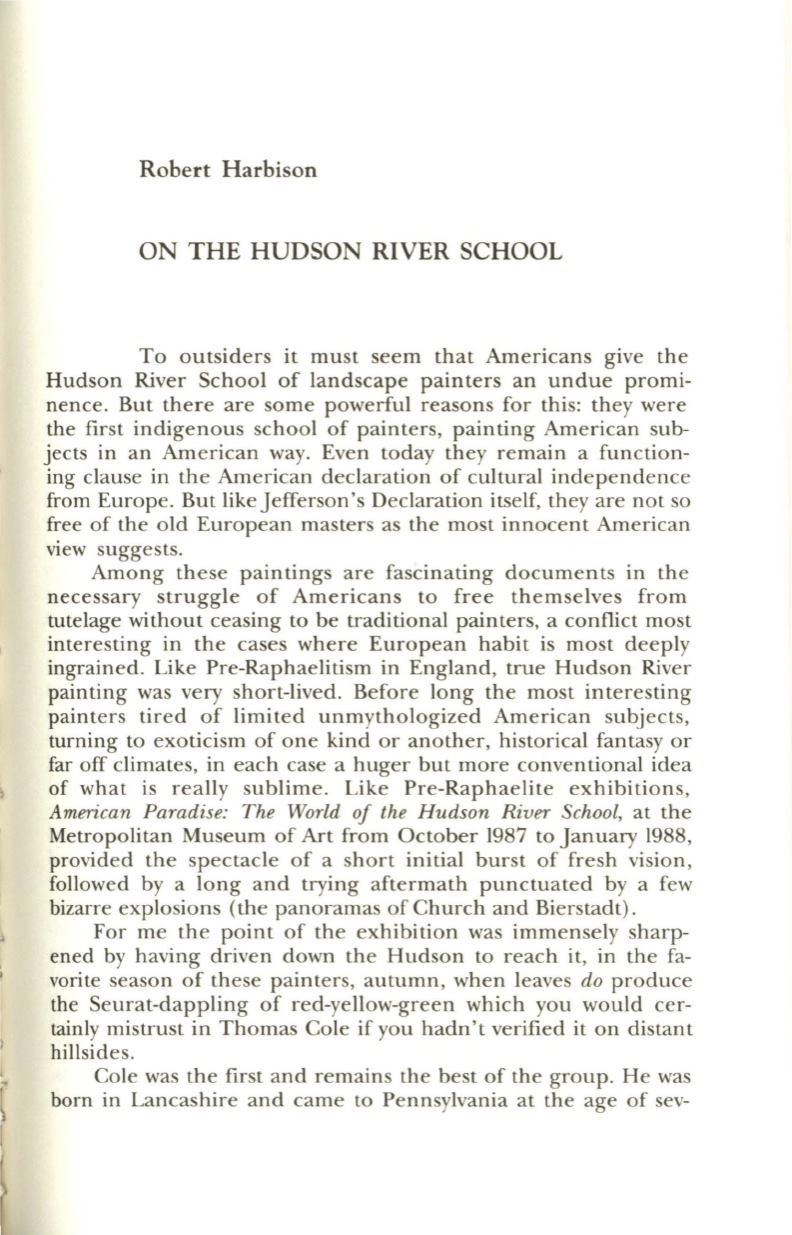
Robert Harbison
ON THE HUDSON RIVER SCHOOL
To outsiders it must seem that Americans give the
Hudson River School of landscape painters an undue promi–
nence. But there are some powerful reasons for this: they were
the first indigenous school of painters, painting American sub–
jects in an American way. Even today they remain a function–
ing clause in the American declaration of cultural independence
from Europe. But like Jefferson's Declaration itself, they are not so
free of the old European masters as the most innocent American
view suggests.
Among these paintings are fascinating documents in the
necessary struggle of Americans to free themselves from
tutelage without ceasing to be traditional painters, a conflict most
interesting in the cases where European habit is most deeply
ingrained. Like Pre-Raphaelitism in England, true Hudson River
painting was very short-lived. Before long the most interesting
painters tired of limited unmythologized American subjects,
turning to exoticism of one kind or another, historical fantasy or
far off climates, in each case a huger but more conventional idea
of what is really sublime. Like Pre-Raphaelite exhibitions ,
American Paradise: The World of the Hudson River School,
at the
Metropolitan Museum of Art from October 1987 to January 1988,
provided the spectacle of a short initial burst of fresh vision ,
followed by a long and trying aftermath punctuated by a few
bizarre explosions (the panoramas of Church and Bierstadt).
For me the point of the exhibition was immensely sharp–
ened by having driven down the Hudson to reach it, in the fa–
vorite season of these painters, autumn , when leaves
do
produce
the Seurat-dappling of red-yellow-green which you would cer–
tainly mistrust in Thomas Cole if you hadn't verified it on distant
hillsides.
Cole was the first and remains the best of the group. He was
born in Lancashire and came to Pennsylvania at the age of sev-


